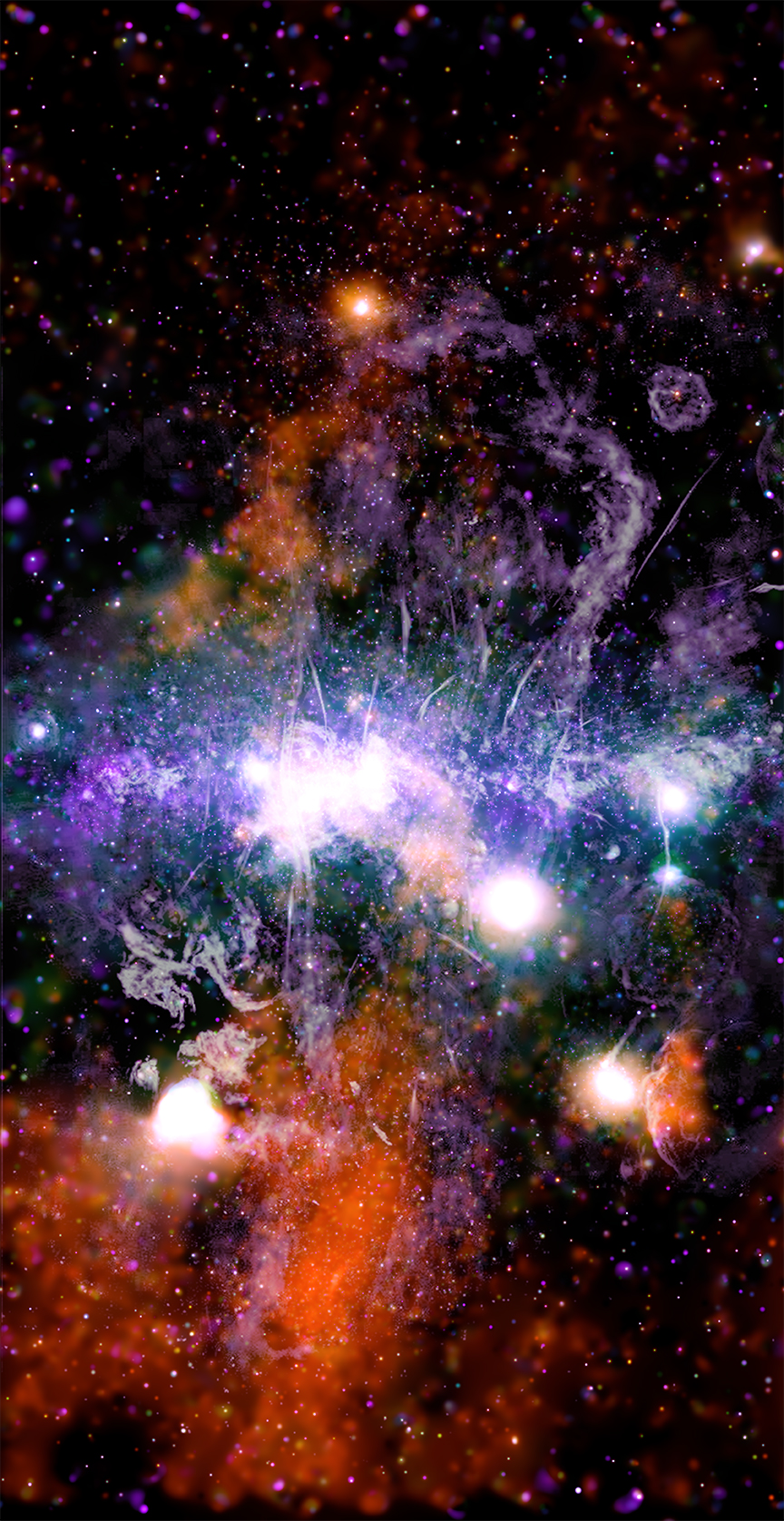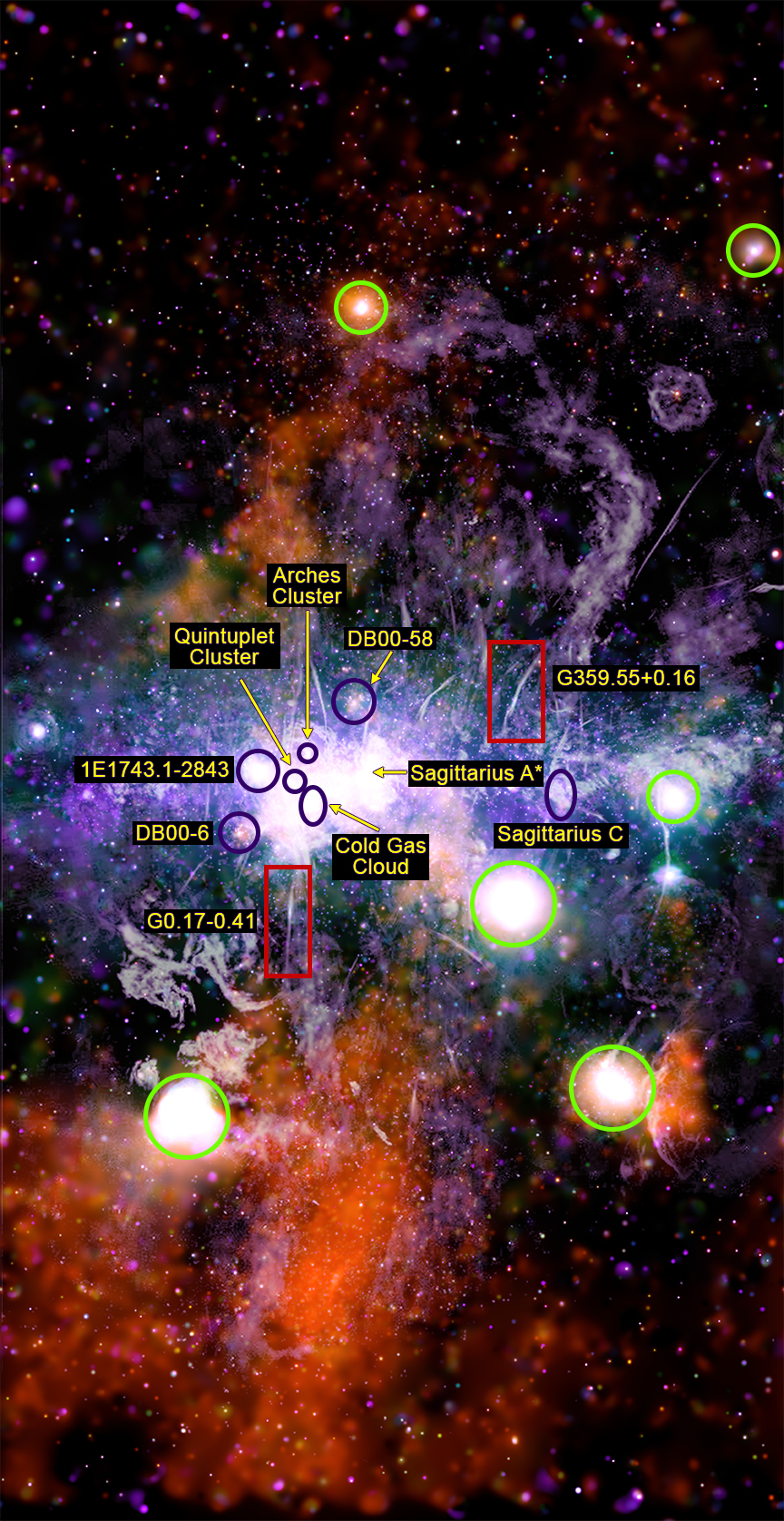Milky Way's galactic core overflows with colorful threads in new Chandra panorama (video, photos)
At the center of our Milky Way galaxy, threads of superheated gas and magnetic fields weave around each other to create a spectacular galactic display captured in a striking new panoramic image from NASA's Chandra X-ray Observatory.
This new image of the Milky Way's core builds on previous observations from Chandra and other observatories. These newest observations stretch higher above and farther below our galaxy's plane, or the disk where most of the Milky Way's stars can be found, than previous imaging efforts have achieved, according to a NASA statement.
In the panorama, you can see orange, green, blue and purple regions representing different X-ray energies. Radio data from the MeerKAT radio telescope in South Africa can be seen in gray and lilac colors. In the labeled version of the image, provided by the Chandra team, you can even pinpoint different notable features of the galactic center, including Sagittarius A*, the supermassive black hole at the Milky Way's heart.
Related: X-Ray universe: Amazing photos by the Chandra X-Ray Observatory
These threads of hot gas could possibly be "tied" together by thin strips of magnetic fields, researchers proposed in a study published April 27 in the journal Monthly Notices of the Royal Astronomical Society.
"The galaxy is like an ecosystem," lead researcher Daniel Wang, a professor in the University of Massachusetts Amherst’s astronomy department, said in a separate statement. "We know the centers of galaxies are where the action is and play an enormous role in their evolution."
It's difficult to study the center of our own galaxy because it is obscured by dust and gas, Wang explains in the statement. However, by using Chandra, which observes in X-ray instead of visible light, the researchers were able to "cut through" the fog, so to speak.
Breaking space news, the latest updates on rocket launches, skywatching events and more!
The spectacular image also provides the clearest picture of a pair of X-ray-emitting plumes coming from the center of our galaxy, according to the statement. This work has also revealed a particularly interesting thread known as G0.17-0.41. "This thread reveals a new phenomenon," Wang said.
Wang thinks that this thread could serve as evidence of magnetic field reconnection, which occurs when opposing magnetic fields are pushed together, releasing incredible amounts of energy. "It’s a violent process," Wang said, adding that the discovery of this thread is "only the tip of the reconnection iceberg."
Email Chelsea Gohd at cgohd@space.com or follow her on Twitter @chelsea_gohd. Follow us on Twitter @Spacedotcom and on Facebook.

Chelsea “Foxanne” Gohd joined Space.com in 2018 and is now a Senior Writer, writing about everything from climate change to planetary science and human spaceflight in both articles and on-camera in videos. With a degree in Public Health and biological sciences, Chelsea has written and worked for institutions including the American Museum of Natural History, Scientific American, Discover Magazine Blog, Astronomy Magazine and Live Science. When not writing, editing or filming something space-y, Chelsea "Foxanne" Gohd is writing music and performing as Foxanne, even launching a song to space in 2021 with Inspiration4. You can follow her on Twitter @chelsea_gohd and @foxannemusic.


